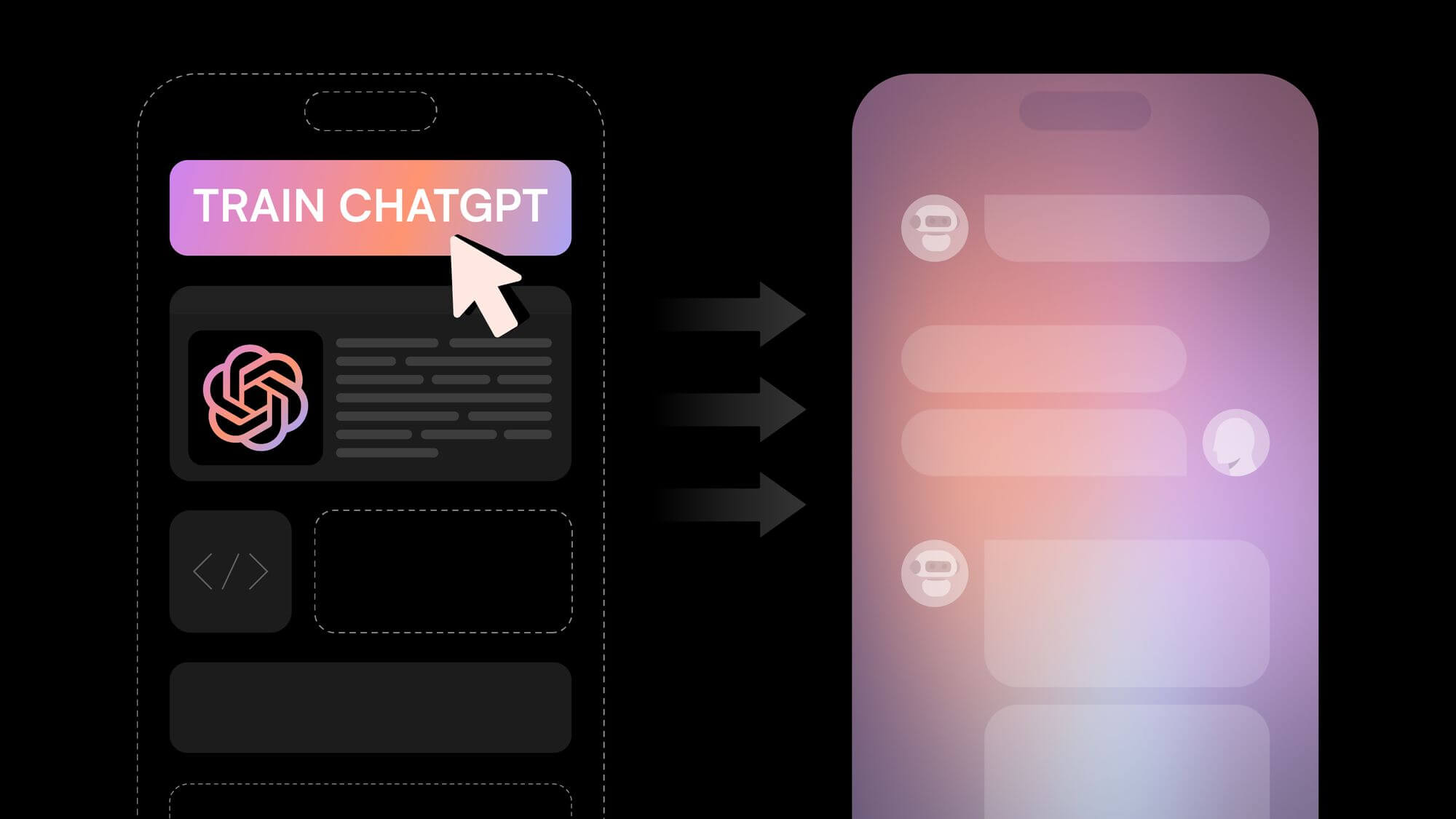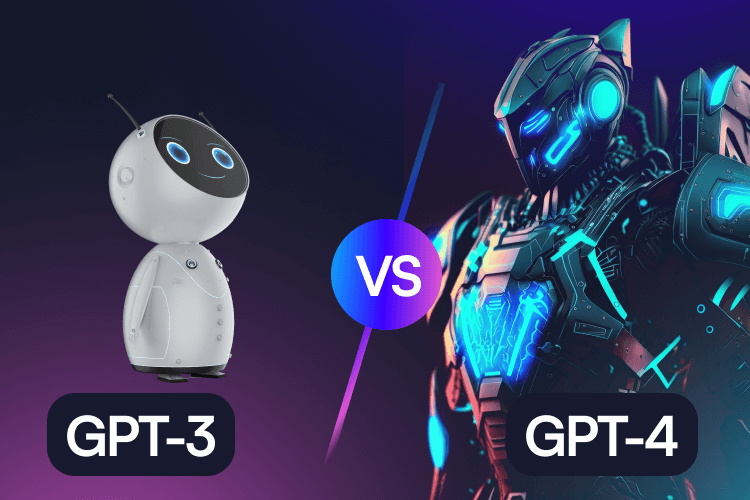What OpenAI has brought to the AI fraternity is nothing less than revolutionary. Now, their latest iteration, the upgrade to the Turbo model from GPT-4, has come up with various possibilities for businesses. GPT-4 Turbo can make user interactions faster, process chat data in a longer context, and more.
But what truly sets apart the Turbo from the usual GPT-4? That’s still a question for many of us. However, we are here to shade some lights through a comparative guide on GPT-4 Turbo vs. GPT-4.
We will explore the features and capabilities of this new Turbo version. Also, the blog walks you through several use case examples so that you can make the best use of the tool.
What is GPT-4 and GPT-4 Turbo?
As part of the lineage of their groundbreaking language models, OpenAI launched GPT-4 in March 2022. The Turbo came much later in the picture; OpenAI unveiled this at their first developer conference.
GPT-4 overview: Brief history and capabilities
GPT-4 is popular for its capabilities to understand and generate human-like text. But beyond that, it can analyze sentiment, draft legal documents, and even assist in technical coding queries. For example, marketers can use this tool to create content that speaks directly to their audience, adapting seamlessly across diverse communication styles.
OpenAI has trained GPT-4 on a vast dataset that includes books, websites, and other texts. That’s why it can understand context more deeply. Also, GPT-4 works with a context window of 32K tokens (about 8,000 words), allowing it to handle more complex and nuanced conversations than GPT-3. It can keep track of longer conversations or documents. If you are into marketing or content creation, you will find this helpful for creating in-depth content strategies.
Digital marketers can craft more engaging long-form content or develop a social media strategy that resonates with a varied audience.
GPT-4 Turbo introduction: What is GPT-4 Turbo?
On the other hand, GPT-4 Turbo represents further advancement in AI language models. One of the key upgrades that the GPT-4 Turbo has received is its extended knowledge base. It has information up to April 2023. Now, ChatGPT can provide more current and relevant responses, covering a crucial aspect for marketers looking to stay on top of trends while creating content.
Incorporating GPT-4 Turbo into marketing and content creation strategies offers an unparalleled advantage in terms of content quality and relevance.
GPT-4 Turbo vs. GPT-4: Key differences
| Feature | GPT-4 | GPT-4 Turbo |
|---|---|---|
| Knowledge Cutoff | Data up to September 2021 | Data up to April 2023 |
| Context Window | 32,000 tokens | 128,000 tokens |
| Input Token Cost | Higher cost | 3X cheaper than GPT-4 |
| Output Token Cost | Higher cost | 2X cheaper than GPT-4 |
| Maximum Output Tokens | Varies based on the application | Maximum of 4096 tokens |
| Processing Capabilities | Primarily text-based | Capable of handling both text and images |
| Availability | Broadly available to users with API access | Initially available to users with existing GPT-4 API access |
Key features and improvements of GPT-4 Turbo
1. Up-to-date knowledge base
As mentioned earlier, GPT-4 Turbo has a much more recent data set. For marketers and content creators, this means access to AI-generated content strategies that reflect recent trends, news, and developments.
If you are into marketing and have previously used ChatGPT to develop your marketing strategies, you will probably find this more beneficial. While using this new version of the GPT-4 to create strategies, you can simply ask the AI assistant to consider recent events, and it will offer you ideas to create campaigns following industry trends.
For example, it can come up with strategies like moment marketing that involve recent trends.
2. Expanded context window
While GPT-4 itself had a huge boost in the context window for ChatGPT, the Turbo has something much bigger. GPT-4 Turbo is expanded to 128,000 tokens, at least 4 times larger than the GPT-4.
The longer context window means ChatGPT can keep track of longer threads, making it perfect for creating detailed reports, in-depth analysis of a border concept, etc. Now, digital marketers and content creators can easily leverage the feature to create comprehensive articles.
For example, suppose you are trying to improve brand awareness. A good content marketing strategy can be creating interconnected blog posts with industry insights, customer stories, how-to guides, or behind-the-scenes looks at your brand.
Thanks to a larger context window of GPT-4 Turbo, you can provide the AI assistant with your brand guidelines, target audience insights, and other details and ask it to create the draft for your first blog post under the same window.
Later on, as you want to create the subsequent post, just put the required information while mentioning how it connects with the previous blog. GPT-4 Turbo can come up with the next draft while ensuring continuity and relevance to the overarching theme.
3. Better at following instructions
One of the most frustrating circumstances I’ve come across while using the previous models of ChatGPT is its inability to read and follow complex instructions. But as OpenAI promised with GPT-4 Turbo, things are here to change. As OpenAI mentioned in their latest blog, “GPT-4 Turbo performs better than our previous models on tasks that require the careful following of instructions, such as generating specific formats (e.g., “always respond in XML”).”
Turbo’s ability to better understand and follow detailed instructions makes it an invaluable tool for completing tasks requiring high accuracy and specificity.
For example, you can create a series of targeted ad campaigns for different demographics. With the inclusion of Turbo, you can put detailed instructions for each ad set. Ask the AI assistants to follow a set voice or tone and customize the brand message, considering the particular pain points of that audience.
4. Improved cost efficiency
GPT-4 Turbo’s token pricing is more economical, with input tokens priced at $0.01 per 1,000 tokens and output tokens at $0.03 per 1,000 tokens. The reduced token cost opens up possibilities for more frequent and extensive use of AI in content strategies without overstretching financial resources.
Small businesses and startups can now employ GPT-4 Turbo for regular blog posts, social media content, and customer service chatbots, enhancing their digital presence efficiently.
Understand how ChatGPT can revolutionize your content marketing strategies. Check out ChatGPT for content marketing.
5. Image and text processing
All the previous models of GPTs, including the GPT-4, were limited to text input and output. GPT-4 Turbo does not limit you to text input. It can analyze and generate content based on both textual and visual information. This dual capability can significantly enhance how we interact with and utilize the AI tool.
Explore more about GPT-4’s multimodal capabilities in our detailed guide on GPT-4 Vision.
Content creators can feed an image into GPT-4 Turbo along with a text prompt and receive a contextually relevant output.
To understand how it can be useful, consider a marketing campaign for a new product. You can simply upload product images to GPT-4 Turbo, along with a brief description or a set of keywords. The AI can then generate comprehensive ad copy or social media posts that perfectly align the text with the visual elements, ensuring a consistent and compelling narrative.
6. Technical advancements
GPT-4 Turbo introduces a JSON (JavaScript Object Notation) mode, a significant enhancement for web and app development. JSON, being the backbone of data interchange on the web, allows developers to work with GPT-4 Turbo in a more structured and efficient manner.
Developers can now embed GPT-4 Turbo into their web applications more seamlessly. Whether it’s for processing user inputs, generating dynamic content, or even building interactive tools, the JSON mode ensures that data is exchanged in a universally compatible format.
For example, think of a developer building an interactive travel planning tool. With GPT-4 Turbo’s JSON mode, the tool can process user queries about destinations, accommodations, and itineraries and respond with structured, useful data that enhances user experience and engagement.
If you know how to use GPT-4, then you can use Turbo as an extension to its existing usability. You can check these GPT-4 use cases for a practical understanding.
But what about accessing this turbo-charged GPT-4? It’s not available with ChatGPT, though!
How to access GPT-4 Turbo?
By accessing GPT-4 Turbo, you can open a world of opportunities for enhanced AI-driven interaction. However, you can access Turbo only if you are an existing GPT-4 user.
Therefore, if you have access to the OpenAI API, then there is a way to get things tested with GPT-4 Turbo. Follow these steps to harness the power of Turbo.
Step 1: API Key generation
- Get the API Key: You should already have an API key if you are an existing GPT-4 user. If not, navigate to the API section of your OpenAI dashboard to generate one. The API key is a must for making requests to the GPT-4 Turbo API.
Step 2: Select how you want to access the model
- Using OpenAI API Playground: For a code-free experience, use the OpenAI API Playground. Here, you can simply input your API key, enter a prompt, and choose the desired output type without needing to write code.
- Using Command-Line tools: If you’re comfortable with command-line tools, you can use the curl command to make requests. You’ll need the API endpoint URL, your API key, and the desired prompt.
- Using Programming Libraries: For those who prefer programming, libraries are available in languages like Python, Java, and JavaScript to make API requests.
Step 3: Make requests to the GPT-4 Turbo API
- Send requests: Using the chosen method, send a request to the GPT-4 Turbo API. Include your API key, the model name (gpt-4-1106-preview for GPT-4 Turbo), and your prompt or input.
- Receiving responses: The API will respond based on your request, including generated text, translations, or answers to queries.
Step 4: Closely monitor and adjust
- Usage tracking: Monitor your API usage through the OpenAI dashboard to ensure it aligns with your plan’s limits and your usage needs.
- Optimization: Based on the API responses, you may need to adjust your requests or integration code for optimal results.
As long as using GPT-4 turbo is concerned, the above steps are definitely a solution for those who already have access to the OpenAI API. But what if you don’t have one? You just have to wait till OpenAI makes it public at a large scale where every user can check out the impeccable features of GPT-4 Turbo.
However, if you are someone who is trying to get access to Turbo to test the Custom GPT feature that OpenAI has launched, we have the perfect solution for you. You can try Botsonic to create your own ChatGPT-powered custom AI Chatbot trained on your own data.
Here is a glimpse of a custom Chatbot created by Botsonic using the data available on famous entrepreneur Gary Vee on his YouTube channel. The Chatbot can answer specific questions that users ask about Gary.
The end note: Embracing GPT-4 Turbo
As we’ve navigated through the unique capabilities of GPT-4 Turbo, it’s clear that OpenAI’s latest iteration is not just an improvement to the language model but a transformation in AI technology. With its expanded knowledge base, larger context window, and improved efficiency in following instructions, it opens new doors for developers, content creators, and businesses.
This cost-effective, versatile tool is your gateway to creating more relevant, detailed, and engaging content. Whether you’re looking to enhance customer experiences or stay ahead in your industry, GPT-4 Turbo offers the tools to transform your strategies and ideas into reality.
FAQs
1. What is GPT-4 Turbo?
GPT-4 Turbo is OpenAI’s latest generation model, more capable than its predecessor, with an updated knowledge cutoff of April 2023. It introduces a 128k context window and is more cost-effective, with input tokens being 3X cheaper and output tokens 2X cheaper compared to the original GPT-4 model.
2. How does GPT-4 Turbo differ from GPT-4 in terms of data processing?
GPT-4 Turbo can retain more information than GPT-4 thanks to its larger context window. This expanded capacity allows it to handle more extensive data in a single prompt, making it more efficient for complex tasks.
3. What are the programming capabilities of GPT-4 Turbo, especially in JSON Mode?
Programming in JSON Mode with GPT-4 Turbo requires less guidance and executes the generation of specific formats (like XML) with greater confidence. This makes it a robust tool for developers working on varied coding projects.
4. What is the maximum output token limit for GPT-4 Turbo?
GPT-4 Turbo has a maximum output token limit of 4096. This limit is part of its design to handle more substantial data sets effectively.
5. Can GPT-4 Turbo process images as well as text?
Yes, GPT-4 Turbo has the ability to understand images in addition to text. This dual capability enhances its applicability in various fields, including content creation and data analysis. However, it’s not a user-friendly option yet. You may find the assistant often remains unresponsive and unable to read text inputs.
However, if you cannot check how the new image input works, you must check out the feature on the best ChatGPT alternative, Chatsonic.












![How to Make ChatGPT Sound More Human: 9 Proven Strategies [With Examples]](/wp-content/uploads/How-to-Make-ChatGPT-Sound-More-Human-1.png)


![17 Best ChatGPT Alternatives That’ll Blow Your Mind in 2025 [Free & Paid]](/wp-content/uploads/2024/08/Best-ChatGPT-Alternatives-min-2-.jpg)







![How to Create a Custom GPT using GPT Builder? [Even Without ChatGPT Plus]](/wp-content/uploads/Build-Custom-GPT.jpg)




























